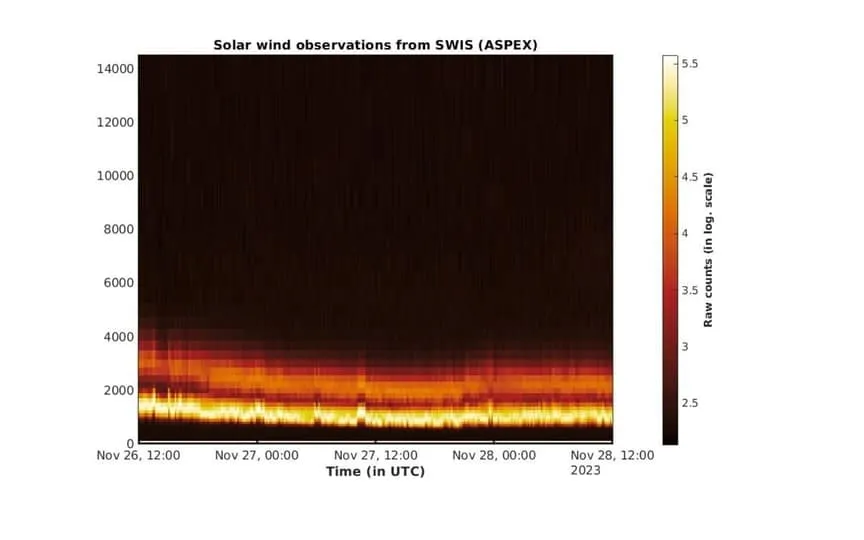Uncovering the Secrets of Solar Wind: ISRO’s Aditya-L1 Mission Begins!
India’s first solar mission, the Aditya-L1 mission, is focused on uncovering the enigmas surrounding the sun. In a recent development, it has reached a noteworthy milestone by commencing observations of solar wind. The Indian Space Research Organisation (ISRO) has announced the successful activation of the Aditya Solar Wind Particle Experiment (ASPEX) payload. To learn more about this recent accomplishment, click here.
Aditya-L1 observations of the solar wind were initiated
ISRO said that the satellite’s Aditya Solar Wind Particle Experiment (ASPEX) payload has started operations and is functioning normally. ISRO also shared an image on X (formerly Twitter) illustrating the energy variations in the amount of protons and alpha particles collected by the new payload. ISRO released: “The Solar Wind Ion Spectrometer (SWIS), another instrument on the Aditya Solar wind Particle Experiment (ASPEX) payload is operational. Histogram illustrates the energy variations of proton and alpha particle counts recorded by SWIS over two days.
As detailed in the ISRO document, ASPEX consists of two instruments – the Solar Wind Ion Spectrometer (SWIS) and STEPS (SupraThermal and Energetic Particle Spectrometer). STEPS began operations on September 10, but the SWIS instrument was activated on Saturday and its performance has been optimal. Equipped with two sensor units, each with a 360° field of view, the SWIS operates in a perpendicular plane. It has efficiently measured solar wind ions, focusing on protons and alpha particles.
The image recently shared by ISRO on social media illustrates the energy variations in the amount of protons (H+) and alpha particles (He2+) recorded by SWIS over two days in November 2023. This information is important for understanding the behavior of the solar wind.
The mission was launched from Sriharikota in Andhra Pradesh on September 2. The main objective of the Aditya-L1 mission is to study various aspects of solar phenomena, including the physics of the solar corona, the acceleration of the solar wind, the dynamics of the solar atmosphere and its origin. Coronal Mass Ejections (CME) and Flares.
As announced by ISRO, scientists are deeply studying the collected data. The scientific community from all over the world is eagerly awaiting the information Aditya-L1’s ASPEX will reveal about the solar wind and its effect on Earth.




